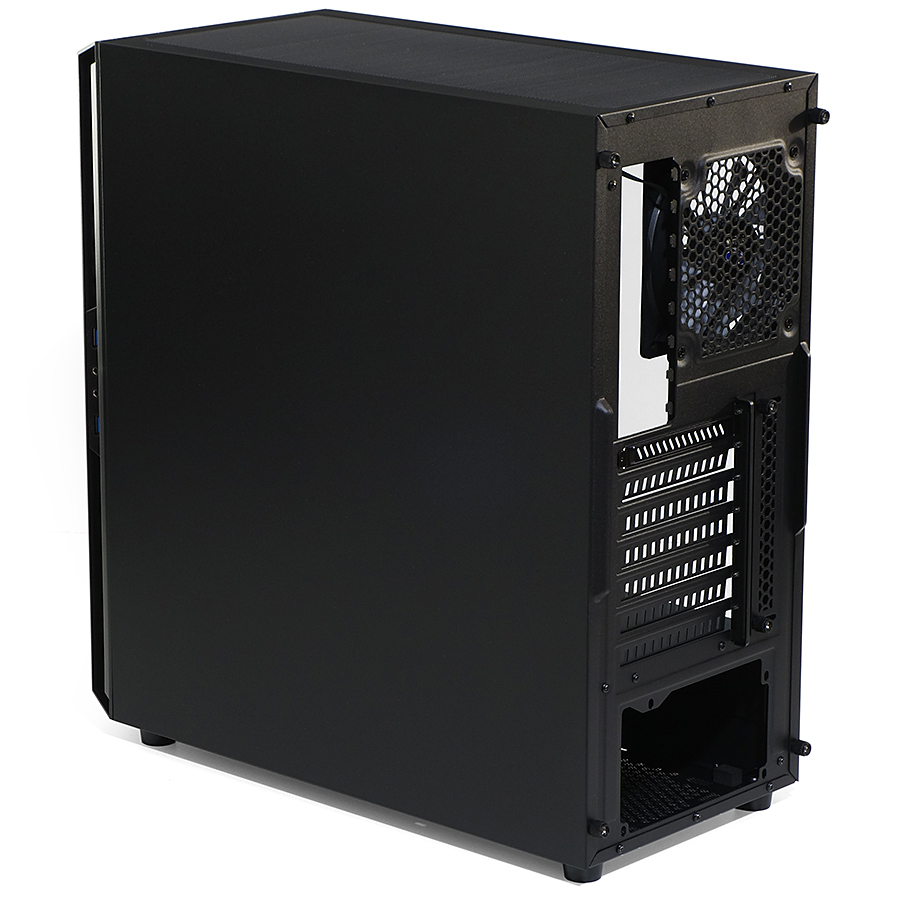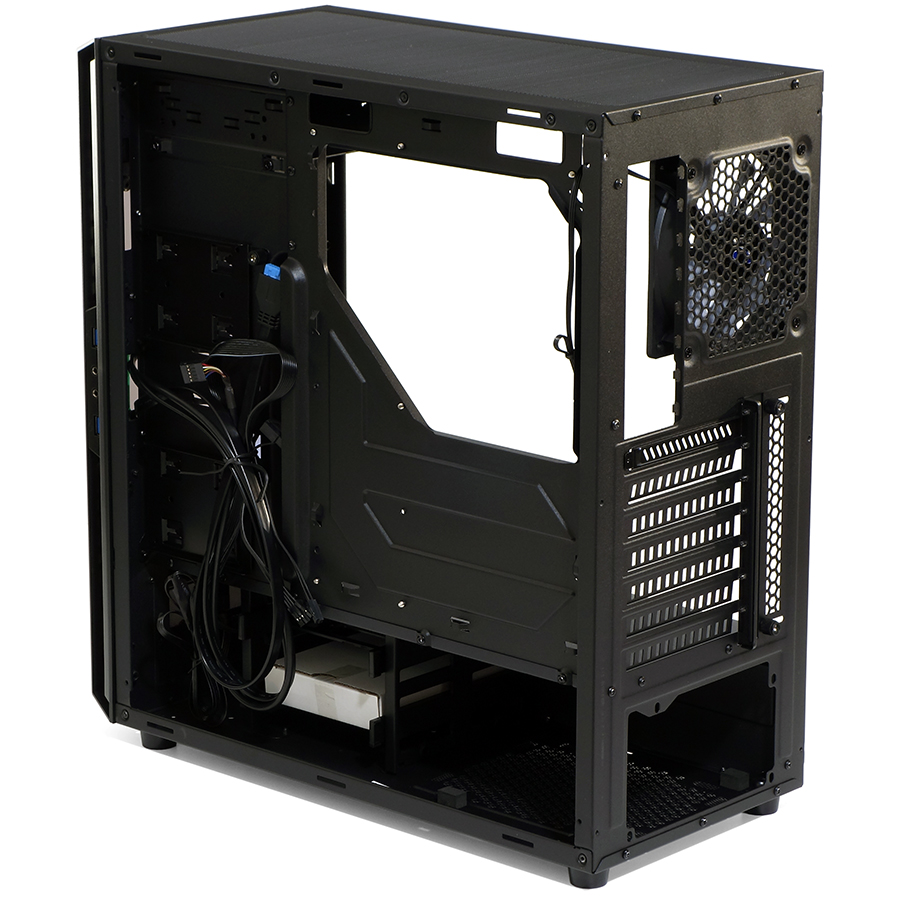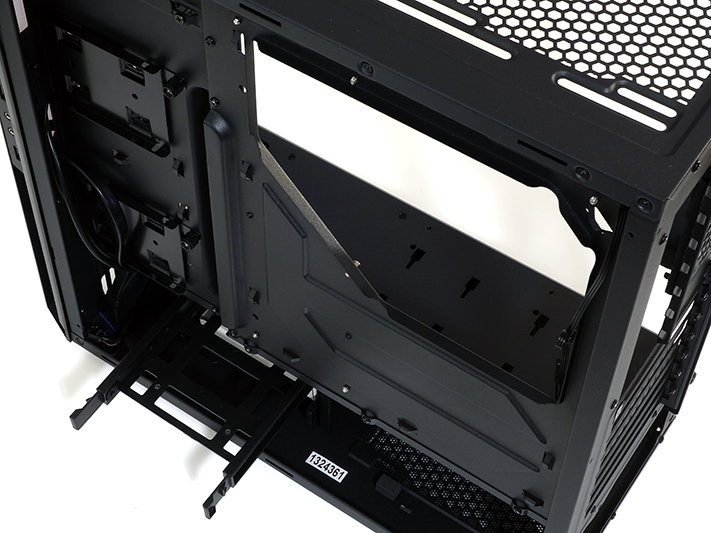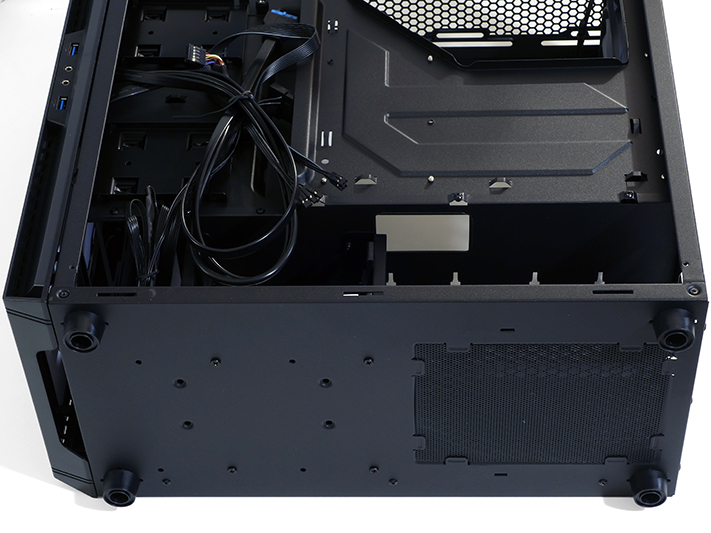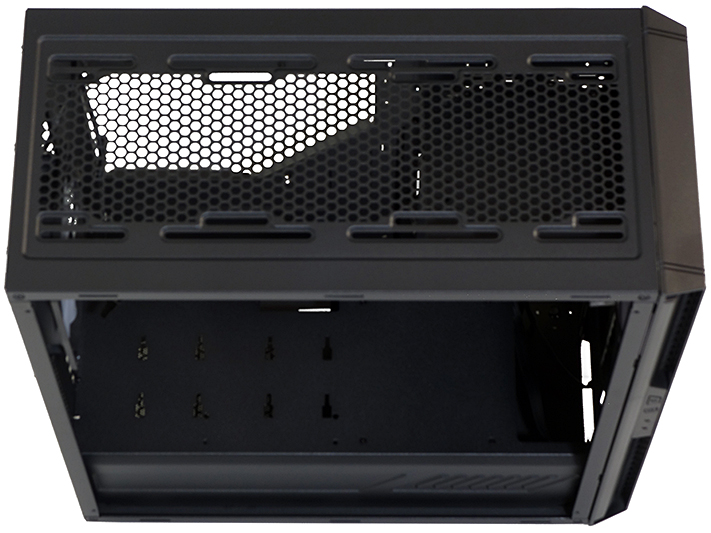Early Verdict
The Raidmax Alpha adds full RGB control cheaply to the low-cost case market.
Pros
- +
Low cost
- +
Good fit and finish
- +
Full RGB with DIMM and Off capability
- +
Remote RGB Controller
- +
Supports 3x 120mm and 2x 140mm radiators behind front panel
Cons
- -
No front-panel dust filtration
- -
Thin materials reduce sturdiness
- -
Max power supply depth of 7.8” with 3.5” trays installed
- -
Single installed fan insufficient for hot hardware
Why you can trust Tom's Hardware
Introducing Raidmax Alpha
MORE: Best PC Builds
MORE: How To Build A PC
With a black steel case that weighs barely more than 12 pounds, there’s no denying that Raidmax focuses its Alpha case line on budget gaming. Even with an RGB controller, it comes in at a scant $70 web price (and estimated $80 MSRP for local dealers). Buyers this interested in saving cost will likely be pleased to see that the panels fit nicely, the finish looks good, and the plastic side window is fairly flat and extremely shiny. It’s also devoid of any frivolous design gimmicks, except of course for the LED lighting that many buyers prefer. And even that feature can be turned off without opening the case.
Ports and buttons are placed on the right and left edges, smoothing the front panel design and providing easy access for those who prefer to have their computer sit on the desk to the left of their monitor. This preference is most common with right-handed users who want extra desktop real estate on the side where their mouse sits.
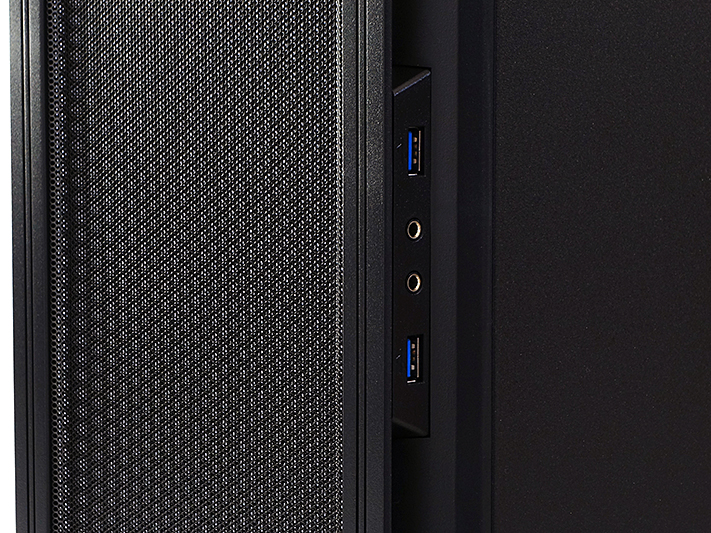
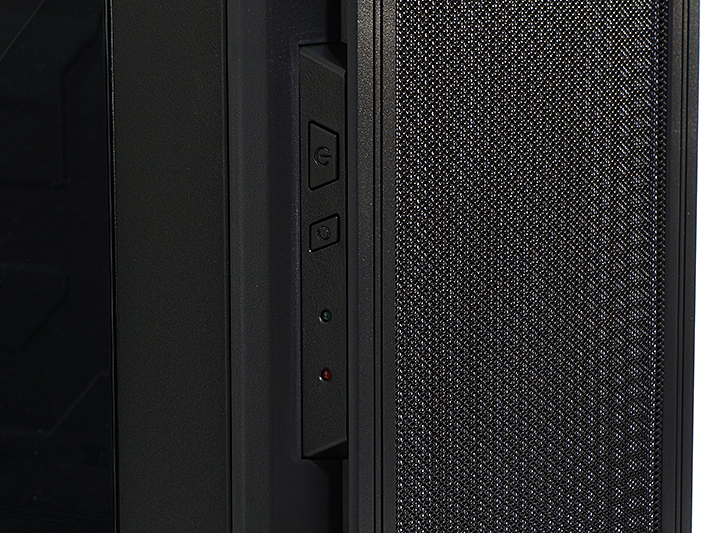
The rear panel is flat, with the card bracket protruding out of it, because it’s cheaper to make a case this way than to add a separate stamping for inset card slots. Inset fan mounts and an offset grill are designed to reduce noise that might otherwise occur if the fan blades were too close to the grill: this becomes more important for users who flip the exhaust fan over to use as an intake, which is often done to accommodate cool air intake when installing a single-fan radiator on the back panel.
The motherboard tray has a large access hole to ease CPU cooler support plate access, and is offset 0.7” from the side panel for easier cable routing. Cable space is deepened to 1.1” in front of the motherboard, but that inset limits motherboards to a maximum 10.3” depth.
The deeper cable space at the front of the case also holds two 2.5” trays, which are modular and can be repositioned atop the case’s power supply shroud.
Get Tom's Hardware's best news and in-depth reviews, straight to your inbox.
Two 3.5” trays beneath the power supply shroud use silicon-damped pins to isolate 3.5” drive vibration, and are also drilled for screw-in installation of 2.5” drives.
Removing the 3.5” drive cage, which is screwed to both the bottom panel and power supply shroud, allows user to install extra-long power supplies. The power supply’s air inlet filter is also accessed from the bottom, and is held in place with flat tabs.
The front panel supports up to two 140mm or three 120mm fans, along with radiators up to 15.2” long, within a 2.4” gap in the top of the power supply shroud. Space in front of the fan mounts is filled with an RGB LED strip, and the traditional fan grill is filled with a plastic light diffuser. Air is drawn from a large gap at the bottom of the front panel cover, and motherboard-zone dust filtration is limited to only the top panel.
Under a magnetic filter sheet, the top panel also supports two 140mm or three 120mm fans, but its 1.2” of space above the motherboard is too narrow for most motherboard and radiator combinations. From this angle we can also see the top of the power supply shroud, with its two alternative 2.5” tray mounting locations and 2.4” front-panel radiator gap.
MORE: Best Cases
MORE: All Case Content
MORE: In Pictures: 40 Unusual Computer Case Mods
- 1
- 2
Current page: Introducing Raidmax Alpha
Next Page Hardware Installation, Evaluation, And Final Analysis-
sillynilly Reminds me of the bargain bin cases I would flip through at my local Fry's. Ah nostalgia!Reply -
g-unit1111 Not bad, it is still Raidmax though. And In Win did the front RGB lighting design so much better than anybody else it's hard to compare.Reply -
RomeoReject You're comparing a $70 Riadmax to a $250 In Win?Reply
"Why does anyone buy a Corvette when they could just buy a Ferrari 488?" -
2Be_or_Not2Be This video window (JW Player) that keeps popping up on Tom's articles is REALLY annoying!Reply -
Lutfij Oh look, we got a RGB remote on that case for 70USD! I'll pass up on this case...seems like other more reputable brands in the past are yet churning out quality cases.Reply -
gilbadon Get rid of that CD drive up front and I will be happy. Is it just me, or do other people get turned off by 5.25" bays too?Reply -
Crashman Reply
It's an Asus ROG OC Panel II bay.19389662 said:Get rid of that CD drive up front and I will be happy. Is it just me, or do other people get turned off by 5.25" bays too?
-
coolkev99 Can't get over the name.Reply
http://www.whatsinsidescjohnson.com/~/media/images/products/US/raid-max-roach-killer-N.jpg

